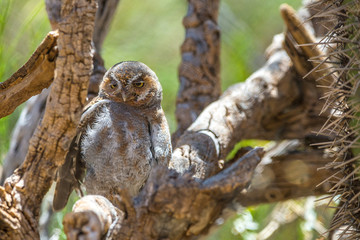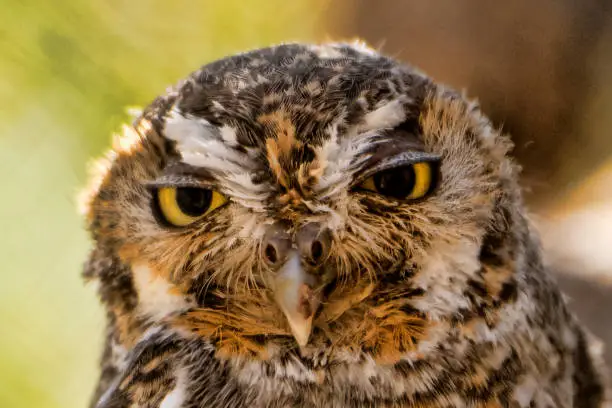Table of Contents
Scientific Classification
| Kingdom | Animalia |
| Phylum | Chordata |
| Class | Aves |
| Order | Strigiformes |
| Family | Strigidae |
| Genus | Micrathene |
| Species | Micrathene whitneyi |
| Scientific Name | Micrathene whitneyi |
1. Description
The Elf Owl holds the title of the tiniest owl in the world! It measures just 12.4 to 14.2 cm in length and weighs between 35 to 55 grams. This petite nocturnal bird of prey has a round head and lacks those ear tufts you might expect. With its striking large yellow eyes and grayish-brown feathers adorned with buff mottling, it camouflages beautifully against tree bark. Interestingly, female Elf Owls are a bit larger than their male counterparts, which is a common characteristic among raptors.
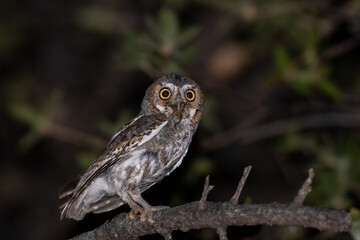
2. Distribution
Elf Owls are found in the southwestern regions of the United States and Mexico. In the U.S., they primarily inhabit Arizona, New Mexico, and Texas, while in Mexico, their territory spans a significant portion of the country. These little owls are known to migrate, with populations from the north heading south when the colder months roll in.
3. Habitat
Elf Owls like dry places. They live in deserts, thorny forests, and river woodlands. They often nest in abandoned woodpecker holes found in saguaro cacti. This is common in the Sonoran Desert. They can live in oak and sycamore woodlands. They also thrive in urban areas with good nesting spots.
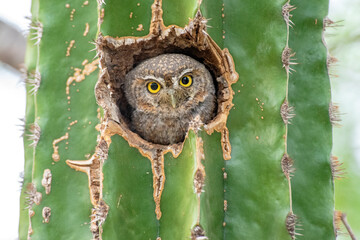
4. Diet
When it comes to their diet, Elf Owls primarily feast on insects. They have a particular fondness for a variety of arthropods, including moths, crickets, beetles, and even scorpions. Interestingly, they’ve been observed removing the stingers from scorpions before munching on them, which shows how they’ve adapted their eating habits. Every now and then, they might also go after small vertebrates like lizards and rodents.
5. Behavior
Elf Owls are nocturnal and exhibit territorial behavior, especially during the breeding season. Males mark their territories with sounds. They use high-pitched calls to draw in females and scare off rivals. When they feel threatened, they might pretend to be dead to avoid predators. This is called thanatosis.
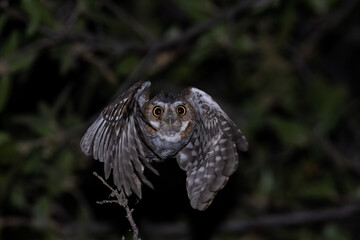
6. Lifespan
When it comes to Elf Owls in the wild, their lifespan typically ranges from 3 to 6 years. But if they’re lucky enough to be in captivity, some can live up to 10 years! Their longevity really hinges on factors like predation, the quality of their habitat, and how readily available food is.
7. Reproduction and Lifecycle
Breeding season for Elf Owls spans from late March to early May. Females lay 1 to 5 white eggs in tree holes or old woodpecker nests. They often choose saguaro cacti. The incubation period is around 24 days. The female broods while the male brings food. Chicks fledge approximately 10 weeks after hatching.
8. Predators
Elf Owls can be quite elusive, but they certainly have their share of foes. Bigger owls, hawks, snakes, and even mammals like bobcats and coyotes are all on the hunt for them. By nesting in high spots, they can reduce their chances of being caught by predators. However, these little birds still face threats, especially when they’re just learning to fly.
9. Adaptations
Elf Owls have evolved several adaptations to thrive in their environments. Their small size and quick flight help them move through thick plants and catch prey easily. Their night vision and sharp hearing help them hunt. Their camouflaged feathers keep them hidden. Also, getting water from prey means they rely less on rare water sources.
10. Nest
Elf Owls have a unique nesting habit; they primarily make their homes in old woodpecker holes. These little birds favor cavities found in saguaro cacti, oak trees, and sycamores, typically setting up their nests about 15 to 35 feet off the ground. They enjoy having some open space around them, often clearing away nearby plants to create a cozy spot. In urban areas, they’re not shy about using man-made structures like telephone poles as nesting sites.
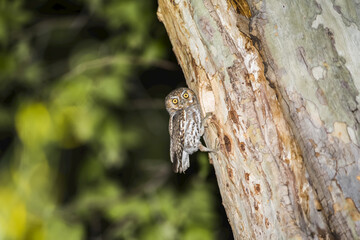
11. Mating Season
The mating season starts in late March. Males attract females by singing and showing off. After pairing, the male courts the female by offering food and preening together. This helps strengthen their bond during the breeding season.
12. Breeding
When it comes to breeding, Elf Owls are true romantics—they mate for life! During the breeding season, these devoted pairs team up to care for their little ones. The female takes on the important job of sitting on the eggs, while the male is busy bringing her food and looking after the chicks once they hatch. This teamwork not only strengthens their bond but also boosts the chances of their offspring surviving and thriving.
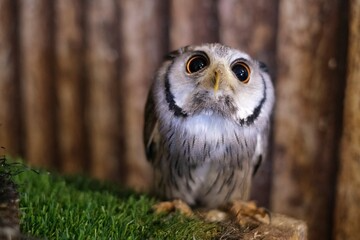
13. Interesting Facts
- Did you know that the Elf Owl holds the title of the world’s tiniest raptor? It’s so small that it can easily compete with some songbirds!
- These little guys have a fascinating trick up their sleeves: they can play dead to dodge predators, which is quite a rare move in the bird world.
- Despite their size, they’re not to be underestimated. They’re fierce hunters, capable of taking down scorpions and even removing their stingers before enjoying their meal.
- The name Micrathene comes from Greek, meaning “small Athene,” which perfectly captures their petite size.
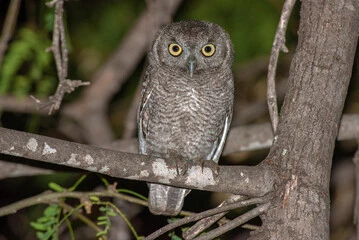
14. Conservation Status
The Elf Owl is currently listed as “Least Concern” by the IUCN. Populations have fallen due to habitat loss from urban growth and farming. This is particularly true in riparian zones. Conservation efforts aim to protect natural habitats and nesting sites. This helps ensure the species survives.
Referance :
https://en.wikipedia.org/wiki/Elf_owl
https://www.desertmuseum.org/kids/oz/long-fact-sheets/elf%20owl.php
https://animaldiversity.org/accounts/Micrathene_whitneyi/
